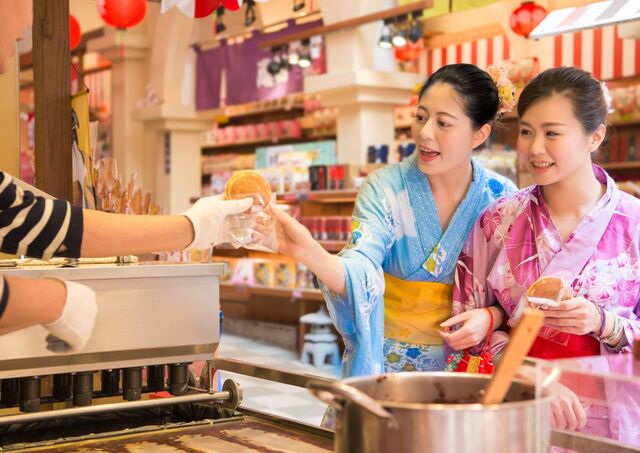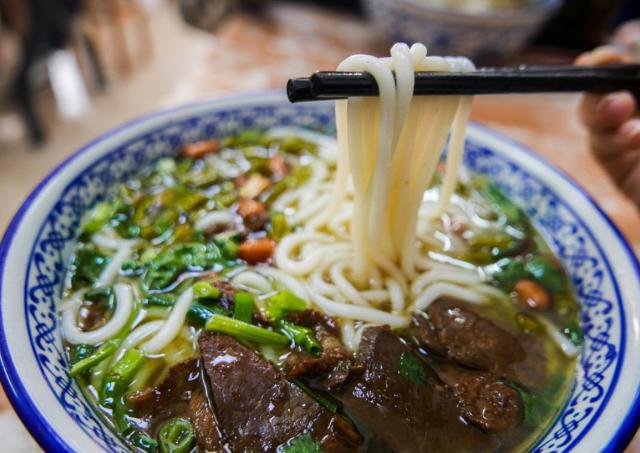What’s for Breakfast? Exploring Japan’s Morning Meals
Whereas we often lean towards bacon and eggs, toast, and sweet dishes at breakfast, a traditional Japanese breakfast is a harmonious blend of savoury, fresh, and wholesome ingredients. The Japanese eat a variety of traditional dishes for breakfast, including rice, miso soup, grilled fish, and various side dishes, creating a wholesome and balanced morning meal.
Ready to learn more? Let’s dive into the world of Japan’s morning meals and discover what makes them so special.
What is a traditional Japanese breakfast?
A traditional Japanese breakfast, or asagohan (朝ご飯), is a well-rounded meal that typically includes rice, soup, protein, and vegetables. It’s designed to provide energy and nutrients to start the day, while also appealing to the senses with its variety of textures, colours, and flavours.
This meal reflects washoku, the traditional Japanese dietary culture that UNESCO recognized as an Intangible Cultural Heritage in 2013. A traditional Japanese breakfast also reflects essential Japanese life values, emphasizing balance in nutrition and the importance of starting the day with a thoughtfully composed meal.
The key components of a Japanese breakfast often include:
Steamed Rice (Gohan)
Rice is the cornerstone of Japanese cuisine, and breakfast is no exception. A bowl of fluffy, steamed white rice is a staple, often served plain or mixed with other grains like barley. It’s a comforting and filling base for the meal.
Miso Soup (Miso Shiru)
No traditional Japanese breakfast is complete without a bowl of traditional Japanese soup, miso soup. Made from fermented soybean paste, miso soup is light yet flavourful, often containing ingredients like tofu, seaweed, green onions, and seasonal vegetables. It’s a warm and soothing way to start the day.
Grilled fish (Yakizakana)
Protein is an essential part of the Japanese breakfast, and grilled fish is a popular choice. Salmon, mackerel, and horse mackerel (aji) are commonly served, lightly seasoned with salt or soy sauce. The fish is typically grilled until the skin is crispy, adding a satisfying texture to the meal.
Tamagoyaki (Japanese Omelette)
Tamagoyaki is a sweet and savoury rolled omelette made by layering thin sheets of cooked egg. It’s slightly sweetened with sugar and mirin (a type of rice wine), making it a delightful contrast to the other savoury dishes.
Pickled Vegetables (Tsukemono)
Tsukemono are pickled vegetables that add a tangy and crunchy element to the meal. Common varieties include pickled cucumbers, radishes, and plums (umeboshi), which are known for their sour and salty flavour.
Fermented Soybeans (Natto)
Natto is a polarizing dish even among Japanese people, but it’s a breakfast staple for many. These fermented soybeans have a sticky texture and a strong, pungent flavour. They’re often mixed with soy sauce, mustard, and green onions and served over rice.
Seaweed (Nori)
Sheets of dried and seasoned seaweed, often used in Japanese breakfasts, are often served alongside rice. They can be eaten on their own or used to wrap bites of rice, adding a subtle umami flavour.
Green Tea (Ryokucha)
A cup of hot green tea is the perfect accompaniment to a Japanese breakfast. Its light, refreshing taste helps cleanse the palate and aids digestion.
Regional variations in Japanese breakfast
Japan’s diverse regions each have their own unique breakfast specialities, influenced by local ingredients and traditions. Here are a few examples:
Hokkaido: In Japan’s northernmost island, breakfast might include fresh seafood like salmon roe ikura or crab, reflecting the region’s abundant seafood resources.
Okinawa: Okinawan breakfasts often feature goya champuru, a stir-fry dish made with bitter melon, tofu, and eggs, showcasing the island’s distinct culinary style.
Kyoto: As a city known for its refined cuisine, Kyoto’s breakfasts might include delicate dishes like yudofu (tofu hot pot) or kaiseki-style small plates.
These regional variations highlight the diversity of Japanese cuisine and the importance of local ingredients in shaping breakfast traditions. Many of these unique ingredients can be found at Japanese grocery stores, which carry essential items for traditional Japanese meals.
Modern Japanese breakfast blends tradition and convenience
While traditional Japanese breakfasts are still enjoyed in many households, modern lifestyles have led to the rise of quicker, more convenient options. Busy urbanites often opt for simpler meals that can be prepared in minutes. Some popular modern breakfast choices include:
Toast and coffee
Western-style breakfasts have gained popularity in Japan, especially in cities. Thick slices of toasted bread, often topped with butter, jam, or eggs, are paired with a cup of coffee. Japanese bakeries also offer a variety of pastries and sandwiches for a quick breakfast on the go.
Yogurt and granola
For a lighter option, many people enjoy yoghurt topped with granola, fresh fruit, and honey. This trend reflects the growing influence of health-conscious eating habits.
Onigiri (Rice Balls)
Onigiri are portable rice balls filled with ingredients like pickled plum, salmon, or tuna. They’re a convenient and satisfying breakfast option for those with busy mornings.
Instant miso soup
While traditional miso soup is made from scratch, instant versions are widely available and provide a quick way to enjoy this breakfast staple. Despite these modern adaptations, many Japanese people still value the principles of balance and nutrition that underpin traditional breakfasts.
The cultural significance of breakfast in Japan
In Japan, breakfast is more than just a meal, it’s a time for family bonding and mindfulness. Many households prioritize eating breakfast together, even if it means waking up earlier. This practice fosters a sense of connection and sets a positive tone for the day.
The emphasis on a balanced breakfast also reflects Japan’s broader approach to health and wellness. By incorporating a variety of food groups like carbohydrates, protein, vegetables, and fermented foods, the traditional Japanese breakfast provides sustained energy and supports overall well-being.
Where to experience traditional Japanese breakfast
Experiencing a traditional Japanese breakfast is a delightful way to immerse yourself in the culture and cuisine of Japan. Here are some places where you can savour this authentic morning meal:
Ryokans
Staying at a traditional Japanese inn, or ryokan, offers a unique and authentic breakfast experience. These inns often serve a beautifully arranged meal featuring steamed rice, miso soup, grilled fish, and pickled vegetables, all prepared with seasonal ingredients.
Japanese Restaurants
Many Japanese restaurants offer traditional breakfast options. You can enjoy a hearty meal of miso soup, steamed rice, and grilled fish, often accompanied by side dishes like tamagoyaki and fermented soybeans.
Hotels
Some hotels in Japan provide traditional Japanese breakfast options, including rice porridge, pickled vegetables, and fermented soybeans. These breakfasts are a great way to start your day with a nutritious and balanced meal.
Japanese Cafes
Certain Japanese cafes serve traditional breakfast items such as tamagoyaki (Japanese-style omelette) and green tea. These cafes offer a cozy atmosphere where you can enjoy a leisurely morning meal.
Japanese Markets
Visiting a Japanese market can also be a great way to experience a traditional breakfast. Many markets offer ready-to-eat options like steamed rice, tamagoyaki (omelette), and grilled fish, allowing you to enjoy a quick and authentic meal.
Whether you choose to dine at a ryokan, restaurant, hotel, cafe, or market, each option provides a unique opportunity to experience the rich flavours and cultural significance of a traditional Japanese breakfast.
How to enjoy a Japanese Breakfast at home
Interested in trying a Japanese-style breakfast? Here’s how you can recreate the experience at home:
For authentic ingredients, consider visiting a Japanese grocery store. These stores carry unique items essential for traditional Japanese meals, such as pickled vegetables and salted salmon.
Start with rice
Cook a batch of short-grain Japanese rice. If you don’t have a rice cooker, a pot on the stove works just fine.Prepare your miso soup
You can find instant miso soup packets at most Asian grocery stores, or make your own by dissolving miso paste in dashi (Japanese soup stock) and adding tofu, seaweed, and green onions.Grill some fish
Choose a mild fish, like salmon or mackerel, season it with salt, and grill it until crispy. If you don’t have a grill, a stovetop pan works well.Make tamagoyaki
Beat a few eggs with a pinch of sugar, salt, and mirin. Cook the mixture in a rectangular pan, rolling it into layers as it sets.Add pickles and seaweed
Pick up some tsukemono and nori at your local Asian market. These require no preparation and add authentic flavour to your meal.Serve with green tea
Brew a pot of Japanese green tea to complete the experience.
Why you should try Japanese breakfast
Japanese breakfasts offer a refreshing alternative to Western breakfasts. They’re light yet satisfying, nutrient-dense, and packed with umami flavours. By incorporating a variety of dishes, they also encourage mindful eating and appreciation for the food on your plate.
Whether you’re a fan of Japanese cuisine or simply looking to expand your breakfast repertoire, a traditional Japanese breakfast is a delicious and wholesome way to start your day.
Japan’s morning meals are a testament to the country’s rich culinary heritage and its emphasis on balance, seasonality, and mindfulness. From the comforting simplicity of steamed rice and miso soup to the bold flavours of grilled fish and pickled vegetables, a Japanese breakfast is a celebration of food in its purest form.
What’s for breakfast? In Japan, the answer is always a delicious adventure.
Japanese breakfasts offer a healthy and balanced meal option and a new way to view our morning meal. Whether you’re looking to experience a traditional Japanese breakfast at a ryokan, Japanese restaurant, or hotel, or simply want to try making one at home, there are many ways to enjoy this unique and wholesome meal.
So why not give it a try and start your day off right with a traditional Japanese breakfast? You might just discover a new morning ritual that nourishes both your body and soul.
Plan your trip with us
Get in touch with one of our travel consultants, they are ready to help you create the trip you always dreamed of.
Online Consultation



